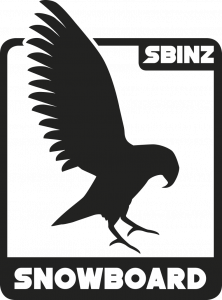Freeride Contests
 What, Why, How
What, Why, How
The focus here is on spending time developing the skills required to join a freeride contest safely for the first time, yet still be able to express their riding when doing so.
Building General Freeride Skills
Shutting Down Landings
Planning a Run
 Movements & Board Performance
Movements & Board Performance
Vertical & Lateral with Edging & Pressuring
As with riding all steep terrain, the blend of vertical and lateral movement is crucial to maintaining edge grip. Range of vertical movement is important but is also limited without effective lateral blending. Chatter occurs more frequently on the heelside than toeside as a result, due to the lack of ankle joint when absorbing. Nervous riders will often use larger joints such as the hips, leading to an over-flex at the waist and lack of edge control.
Rotational with Steering
Consistent steering utilising both upper and lower body, with the ability to adjust timing and power, is necessary to perform well in freeride contests. Focusing on where a rider is looking throughout their turn is a useful tactic here. Unfinished toeside turns and poorly shaped heelside turns are common issues, due to the challenging environment.
Longitudinal
Fore-aft movements should be matched to the snow conditions and use of natural features.
 Terrain & Group Management
Terrain & Group Management
When riding steep faces with high consequences, it is natural for riders to constantly look straight down the hill below them, to ensure they know where they are on the face. Looking straight down the fall line often brings riders into a sideslip on the heelside or leaves turns incomplete on the toeside. This tendency is one of the biggest challenges when coaching development level freeriding, as it creates hesitancy in the rider, limits their flow, and affects their turn shape. Time should be spent building comfort and confidence in mellow terrain, before committing to the steeper faces.
 Corrective Teaching
Corrective Teaching
 Self Reflection
Self Reflection


